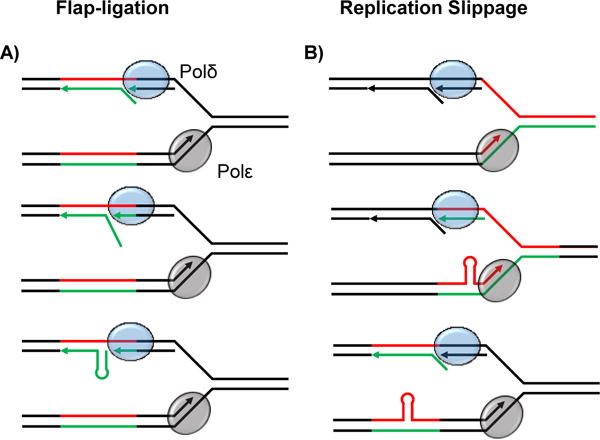Figure 2.

Mechanisms of small-scale repeat expansion. A: The flap ligation model of repeat expansion. The lagging strand polymerase (Polδ) performs displacement synthesis on the preceding Okazaki fragment leading to the formation of a 5′ flap. Formation of a hairpin structure within the flap precludes flap processing. Subsequent ligation of the hairpin flap to the adjacent Okazaki fragment results in a strand asymmetry that can lead to expansion upon the next round of replication. B: The replication slippage model of repeat expansion. The leading strand polymerase (Polε) slips within the repetitive sequence resulting in the formation of a hairpin on the nascent strand. This hairpin can be duplicated into an expansion upon the next round of replication. Slippage can occur on either the leading or lagging strands.
